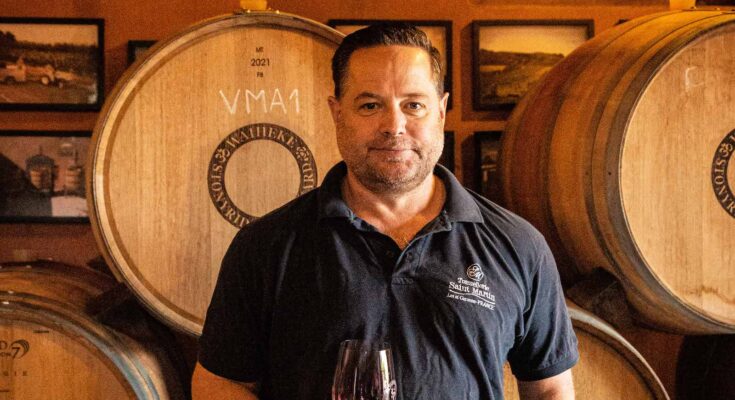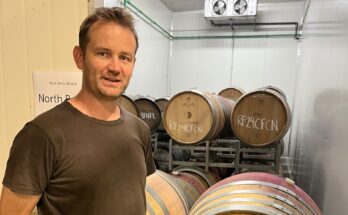In the heart of the Onetangi Valley, I’m catching up with Marty Pickering at Stonyridge. Best known for one of New Zealand’s most celebrated wines – the Larose Bordeaux blend red, but the first thing we get into is their Chardonnay – no surprises there, and we take a stroll down to the vineyards. From there we can see down to the old shed, where Stonyridge first started – which my colleague Gabor remembers…
Marty: I’ll show you downstairs some photos of the first harvest where they’re rinsing out barrels just sitting on the grass. It was pretty basic, literally garageiste winemaking. A lot of people claim to be ‘garageiste’ but this actually was.
I’ve been here ten years now, and one of the only vintages we haven’t made Larose is 2017 – where from the start of February to the middle of April we got 840 mm of rain, which is two thirds of the annual rainfall for Waiheke Island – and 1992 which was Mt Pinatubo, before my time.
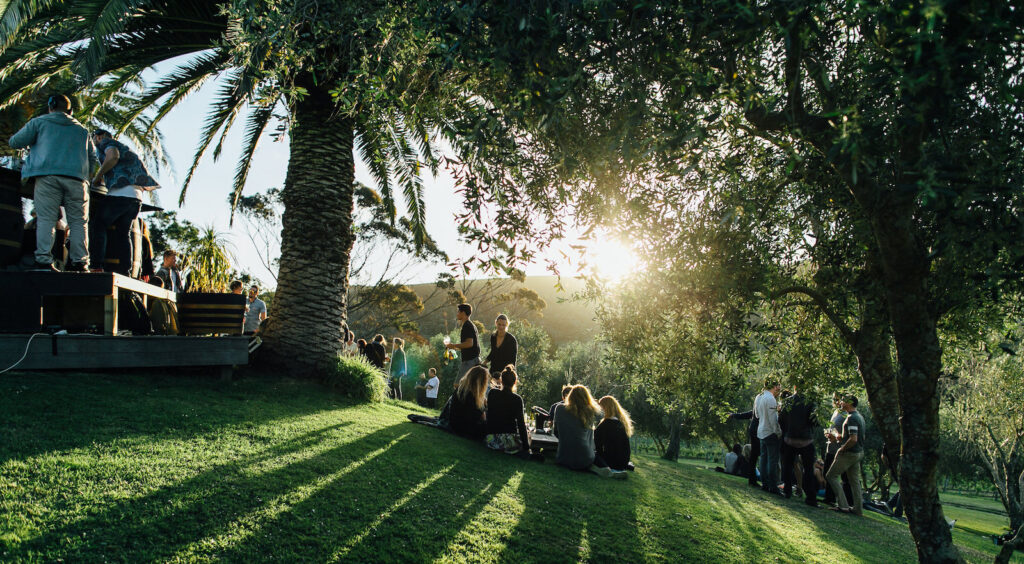
WineFolio: How’s this year looking?
MP: This season is well advanced and we’ve got a good crop. Weather during flowering was really good. Nice sunshine last season, so quite fruitful buds. The earlier part of Spring was quite wet, so there’s a couple of patches of issues with powdery, but not too bad. We had a lot of moisture in the ground which was good for canopy growth, and we’re looking at a potentially early harvest.
We can get up to about 36 degrees in the vineyard. Onetangi Valley is its own little microclimate, because it is a bit of a bowl and we’re quite nicely surrounded. There’s a lot of vineyards that run down to the road from this ridge here – you’ve got Tantalus, the Shepherds Point block, Wild Estate, and the Carter Soho block up against that hill, which has quite a nice aspect as well. A lot of people, when Steven planted, looked at this place, and then went and bought blocks with spectacular ocean views. But wind is a real enemy of grape vines, and so they had these vineyards that looked spectacular but struggled. Look at Peninsula Estate – that got completely ripped out. They used to make some pretty nice wines in the good vintages, but in the average to poor vintages they really struggled – even just with fruit set.
Waiheke’s got five or six different soil types throughout the island, so it is not just one type of clay. We have olive trees on the property and it all gets picked by Rangihuoa, and we get 50% of the oil back once it is processed. We also have cork trees. There’s one just here and then a grove of them down further, and a big one next to the winery. Back when Stonyridge was first having tourists, they were told ‘one of these days we’ll be harvesting all our own cork’ but it just isn’t dry enough. One of our winery suppliers is Portuguese and he’s worked in the cork industry for decades and he keeps saying that the next time he comes up he’s going to bring his tools and peel the trees.
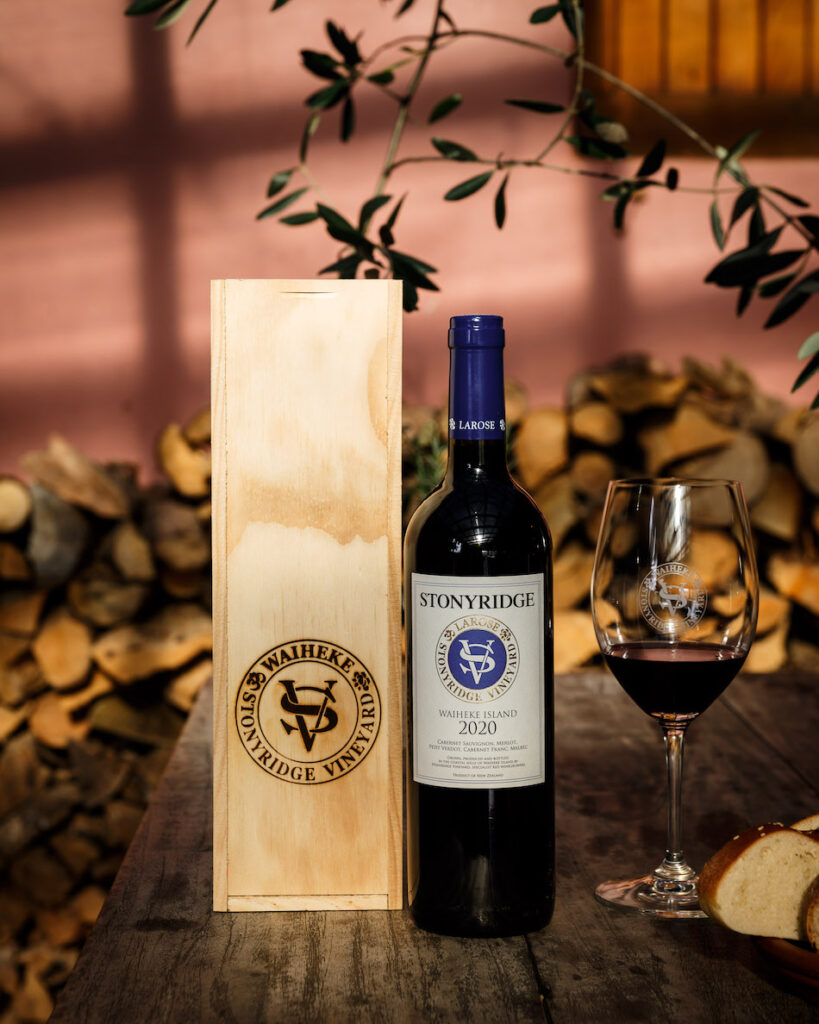
WF: That would be great, just to have a slab of it and say that it comes from this place. And, how many tonnes does the winery do in a year?
MP: In a big vintage we’ll do 35-ish, but that is capacity. The Barrel room was really only set up to do twenty barrels a year, but you could do 18-month ageing. Now we fill it and plus some, so we have to do the bottling of the vintage every year.
WF: Even the Larose? So do you use quite a bit of new oak?
MP: Yes, so the Larose gets about ten months in total. We do around about 60, some vintages 70… so it has got a tonne of new French oak. The cost of barrels seems to be creeping up every year, much higher than the rate of inflation.
WF: How did you end up working here?
MP: I was at Mudbrick as the Head Winemaker, and I’d collected a few gongs over there. So when Summer, the winemaker here, was leaving they approached me, and I haven’t looked back. We don’t really enter competitions much. I enter things like the Pilgrim in a couple of competitions but we’re not registered as a Sustainable Winery, so there’s only a couple of competitions we’re allowed to enter!
Our winery is so old it would need some major upgrades. The vineyard is accredited sustainable and we used to run it organically although it was never registered. But we started to get a wet season disease in the Cabernet, which was really taking everything out, so we had to look at some of the more systemic chemicals to try to deal with that. Because if we don’t pick Cabernet we’re out of business basically. So that necessitated a bit of a change in thinking. There’s no point in sticking to your principles as you’re going out of business.
WF: Irrigation?
MP: No, all dry farmed. Pretty good clay soils which holds the water. We get a lot of rain in the Winter and Spring.
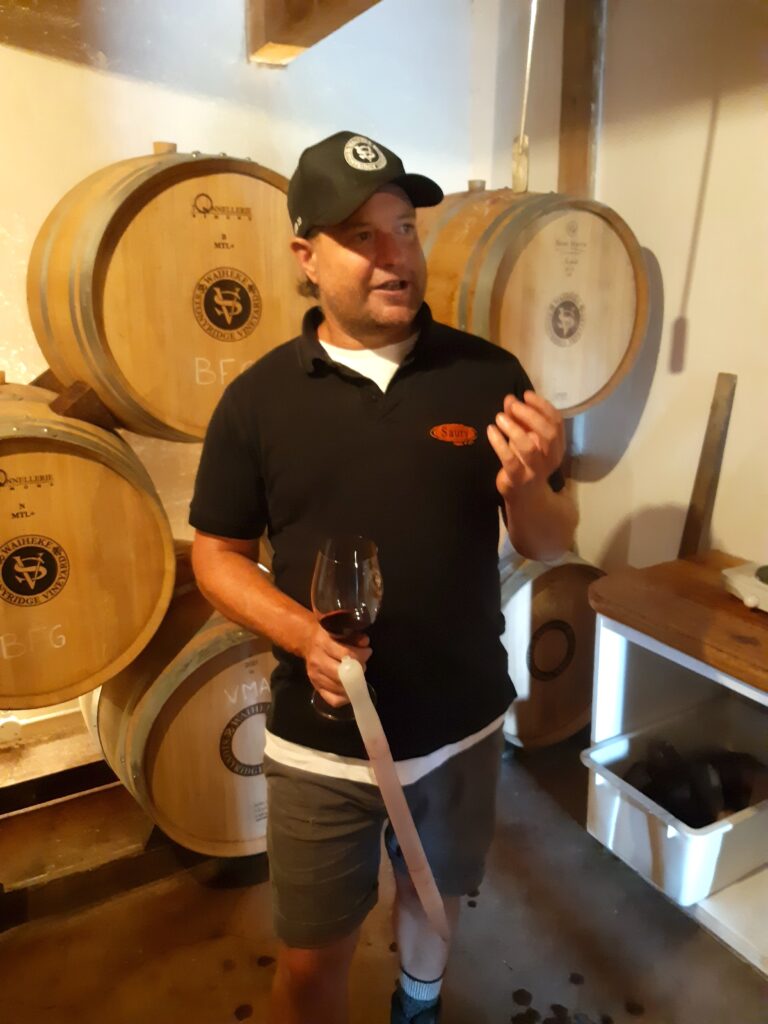
We decant ourselves down to the barrels, in the oldest parts of the building.
MP: We use a lot of new oak and we use thin staves as well, so the wines aren’t getting too developed. We bottle the wines after ten months but they’re really grippy and they’re built to be cellared. We’re getting the oak flavour that we’re after, and I do like the wines as they are – quite big, quite a mouthful. And you’re happy to leave them for ten, twenty years, which is what our customers do. We do have a few older members who complain that they have to leave them, and say “I’ll have to cut my allocation, because I’ll be dead by the time it comes to drink them”. Which is a very real problem.
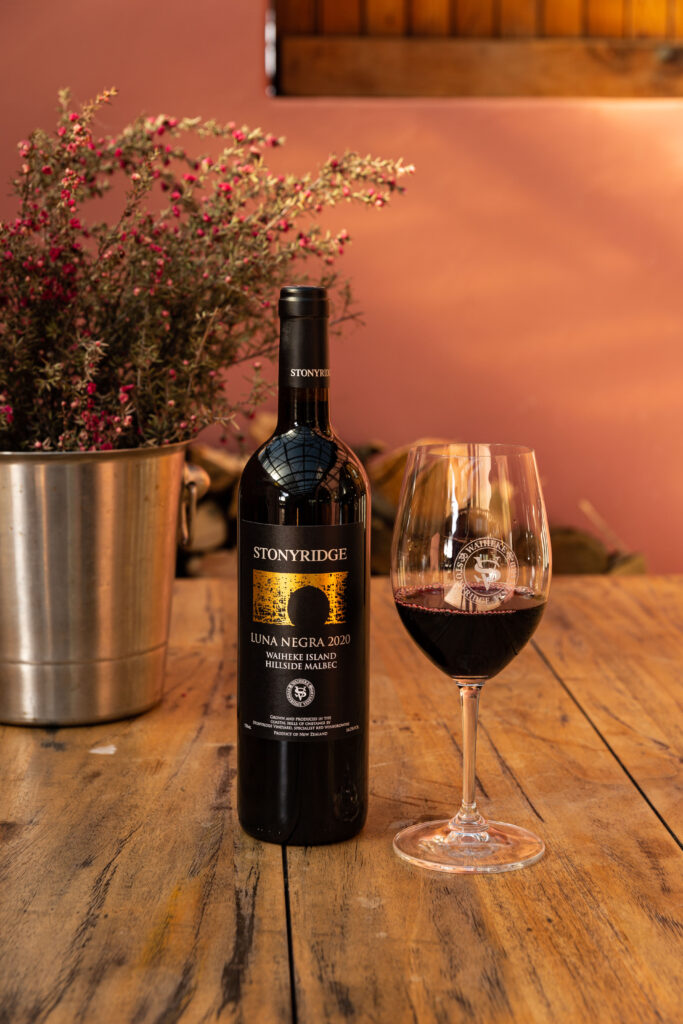
WF: What’s this in the glass, it’s really nice?
MP: Have a guess.
WF: I’d say it’s got a lot of Malbec in it. And also a very distinctive blanched almond note.
MP: Yes, that’s the Luna Negra, it is Malbec. This particular cooperage, the Atelier, is newer, and the guy had worked really closely with Didier Dagueneau to develop the cigar-shaped barrels. The Cooperage is right in the middle of the Tronçais forest. I love it with the Malbec. It’s got a character about it that I think really works well.
WF: Who else do you think is doing good things on the island?
MP: Goldie are starting to do some really good stuff these days, and at Mudbrick their top wines are good. I did see one of their other wines on the market six months after harvest though – i assume just to get some wine out. There’s only so much earlier that you can release wines though – you can’t do it every year, or you’ll end up a week after harvest!! It doesn’t make any sense. Just accept the fact that you’re a winery and you’re going to run out of the product. Source wines from elsewhere and do it like that rather than compromise the quality. The vast majority of wines are bottled under screwcap, so you’re also not going to get much development.
And this is Cabernet Franc, Cabernet Sauvignon. Cabernet Franc is one of those varieties that can just look like absolute arse right through. It can be so leafy and foxy. 2014 was a really terrible year. Every time I stuck my nose in a tank, I thought “I wonder if I could have an accident with this”. But after a decent amount of time in barrel it just came right and lost that vegetal edge. Most of it went into the Airfield.
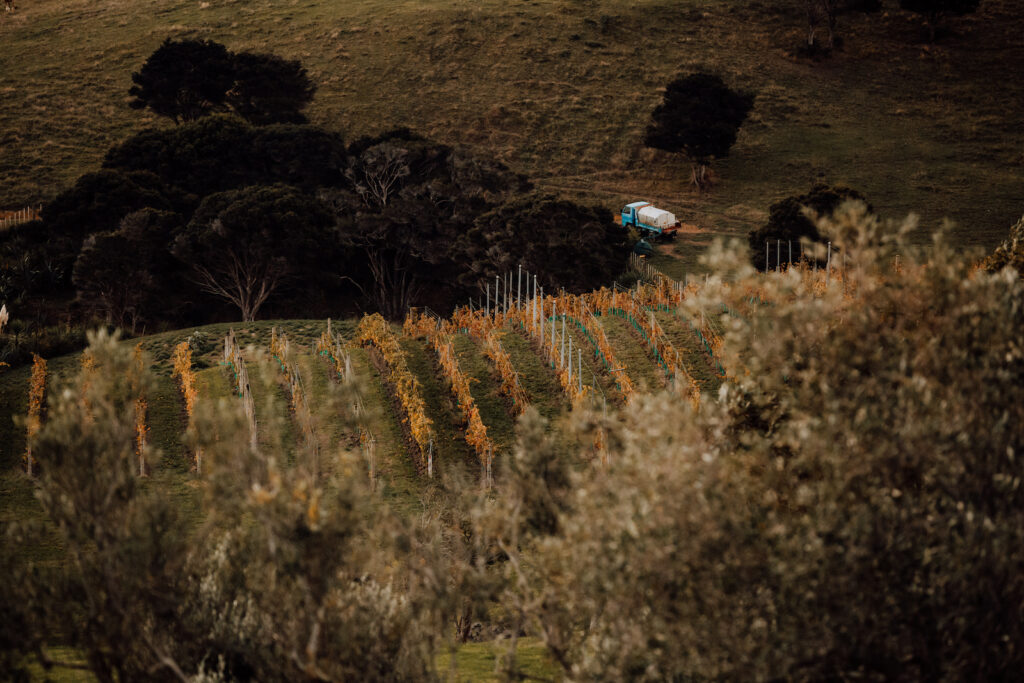
We also love our Petit Verdot. In 2017 when we pretty much lost all the Cabernet, the Petit Verdot was the thing that really saved us. We released another wine called Coeur de Lion, because it wasn’t Cabernet-based so we didn’t want to call it Larose. That was principally Petit Verdot. They’re loose bunches so they have a lot of airflow and it works really well in a wet vintage. Sometimes it can be close to 20% of the Larose. It’s very floral and has a savouriness about it.
WF: Wow, what’s this? That just leaps out of the glass. Sweet fruit, but amazing big tannin.
MP; That’s mainly Cabernet, about 85%, with a little bit of Petit Verdot, a bit of Franc. We’re a little limited by tank size – because of the crop we’re bringing in I’ve got to maximise volumes in tanks. That’s why I’ve got a few blends in tanks.
WF: And why is this one so amazing?
MP: That’s the Cabernet! All these other bits and pieces… just supporting. For me, this year, the sugars were a little on the high side. 2019 was an example where the day we picked the cabernet, we’d just had quite a lot of rain, but it was right at the point where it tasted really good, but it needed to be brought in right now. We hammered it and picked a third of the crop in one and a half days. The wine from 2019 was wonderful.
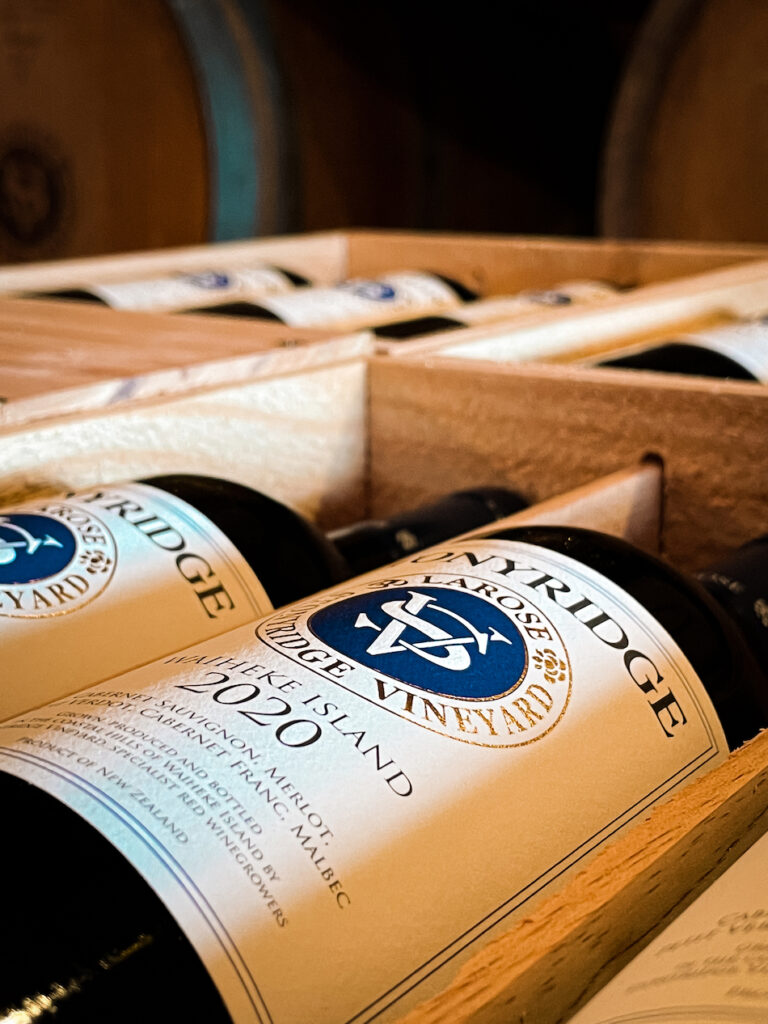
I prefer to pick with ripe flavour. If you talk about these wines with big extraction, big fruit – if they’re 12.5% alcohol, they don’t have the body to carry that. All front of the mouth, big tannin, without that richness in the mid palate.
It’s like the Chardonnay i produce here. There’s lots of people on the island who pick their Chardonnay as soon as it is 19.5 or 20 brix. Because they want to keep freshness and elegance and all this kind of stuff. But all you’re doing is picking green fruit. There’s no goldenness about it. You’re fighting nature. It’s not ripe fruit, it’s green fruit. It’s just bullshit. If you wanna make Chablis, go to Central Otago. You’ve got these lovely long, hot summers on Waiheke – which lends itself to richer, riper wines. I don’t understand it.
WF: What would you be doing if you weren’t a winemaker?
MP: Oh, God knows. I’ve been doing it so long. I wasn’t even legal drinking age when I first started at Goldwater. I did dairy farming for a while before I started with wine, because my Dad was a dairy farmer and had a farm. I worked for a while at another farm. I hated it. It was back breaking – and up at 4am, didn’t finished until after six of an evening. Fall into bed. Just a grind. And I worked out what I was getting paid – you used to get a weekly wage and I worked out it was about $2.50 an hour. They took out accommodation and all those kinds of things. Happy I got into wine.

